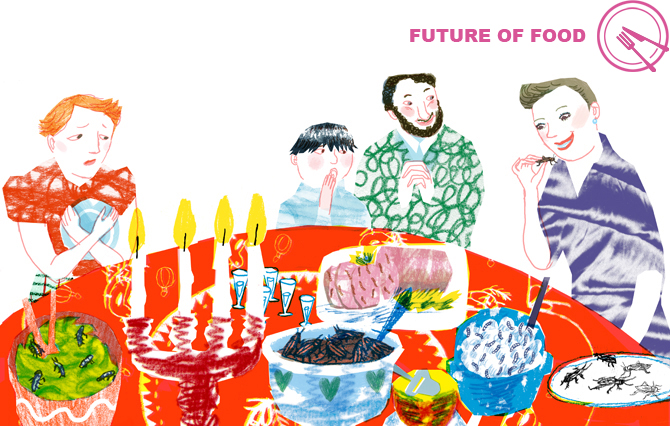
Insects creeping closer to western dinner tables
"Please pass the ... crickets." Some Christmas dinner in the not-too-distant future, you just might be asking for someone to pass you a steaming platter of insects.
It's a standard source of nutrition in many parts of the world, but for now, people in the west largely consider the idea of eating insects somewhat, uh, repellant.
"Insects as food hasn't taken off in Sweden, but there are many things going for it, says Lovisa Rathnayake Nilsson.
A student in chemical engineering, she has been involved in the project, "Can you live on insects?", as part of a course in information methodology.
The students have looked at different aspects of using insects in food production, from an economic, ethical and a sustainability perspective.
"According to the UN, it is necessary to reduce global poverty, and for the next generation to survive. So it is only enough to chew on for sustainable development, and less impact on the ecosystem.
Insects are a staple on dining tables in many parts of the world, not least in Asia. In spite of the high nutritional and protein value bugs offer, people in Sweden (among other western countries) have yet to follow suit.
But the project participants report that insect consumption could help avoid problems with invasive species that do not occur naturally in Nordic fauna. Three such species, according to the project work, lend themselves well: crickets, mealworms and honeybees. They all contain plenty of "quality protein",- that is, inter alia, containing the amino acid tryptophan. But besides a great nutritional value, there are other advantages besides the usual protein supplies from fish, eggs and especially meat.

The project looked at animal husbandry of cattle and pigs and compared that with breeding insects on a large scale. Raising cattle is of course much more expensive and requires more space. Insects are easier to grow in confined spaces. Plus, several thousand insects can be raised in the same space that a full-grown cow needs.
"Insects would have similar conditions as in nature, where many live together in small areas," Rathnayake Nilsson says.
Although eating insects seems to offer nothing but benefits, the idea is a non-starter in many western cultures.
"Historically, we see insects as pests and something that does not give anything more — unlike the cow, which gives milk, or chickens, which produce eggs," she says. The one exception perhaps is that we rely on bees for honey.
According to a small survey that was part of the work, younger people were more positive about eating insects than older people were. Also, men are more positive toward it than women.
"It's probably a learned behavior that people are disgusted by them. Perhaps we should educate children so they become more positive about insects?"
What would you prefer for Christmas dinner?
"Maybe cockroaches to nibble on. There are really big ones with a nice reddish brown color that I have seen in Sri Lanka. Or grilled worms? Ants probably go better with a Friday night movie," Rathnayake Nilsson says, laughing.
Jill Klackenberg
More in this series